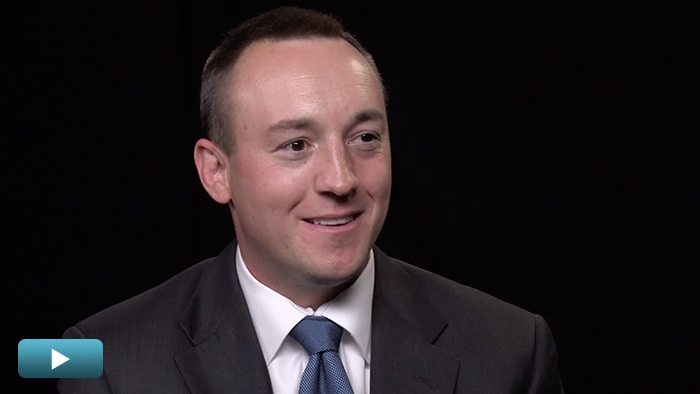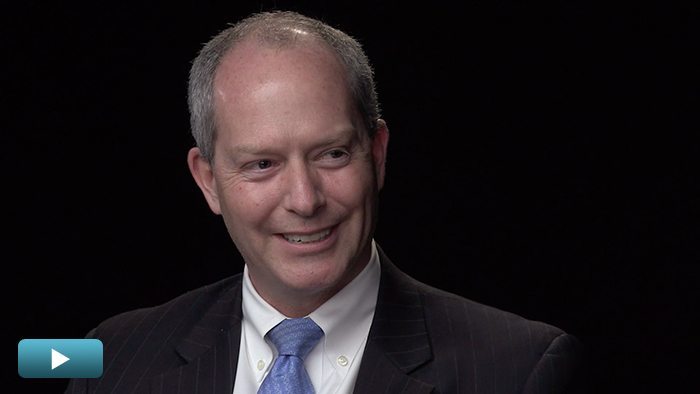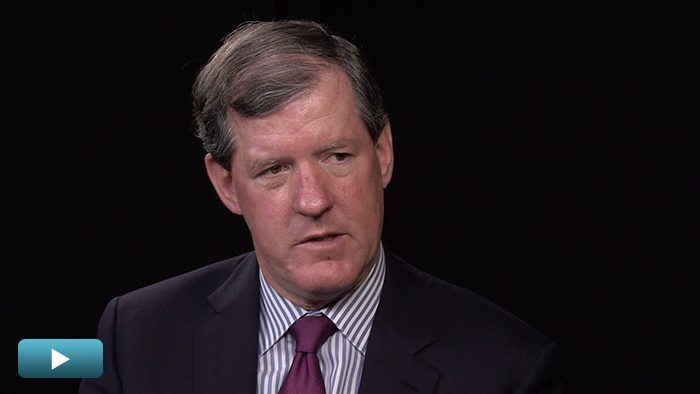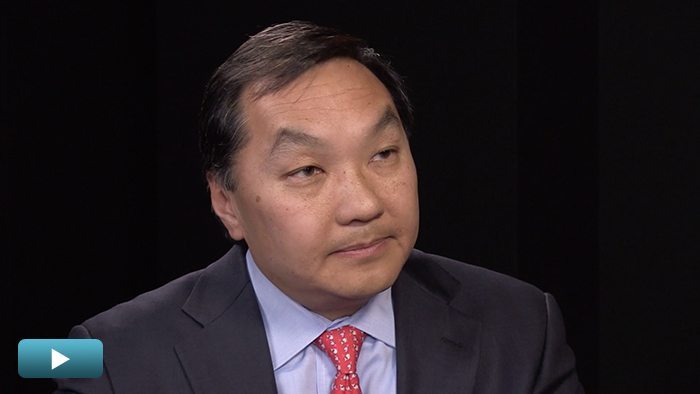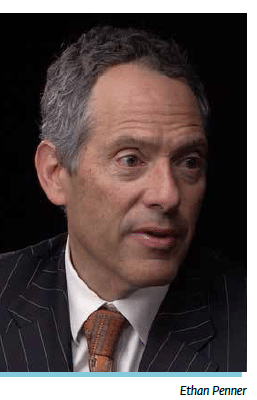U.S. Debt Markets: Overfunded and Mispriced
CBRE Capital Partners’ Ethan Penner discusses finding relative value in debt, how the European debt markets offer better opportunities than the U.S. and how broader mandates are critical to success as a private equity real estate GP.
Transcript Download Transcript
U.S. Debt Markets: Overfunded and Mispriced
With Ethan Penner, formerly of CBRE Capital Partners
Zoe Hughes, PrivcapRE:
I’m joined today by Ethan Penner. Thank you so much for joining me, Ethan.
Ethan Penner, Formerly of CBRE Capital Partners:
Thanks for having me. It’s a pleasure to be with you.
Hughes: You’re known as one of the pioneers of the CMBS market. You lead Nomura Securities, with CBRE Capital Partners. It’s fair to say you have seen highs and the lows of the commercial real estate market. What is your perspective on how you characterize commercial real estate today? What are you seeing in the market out there?
Penner: Everybody knows the price action. Clearly, we’re in big cities at the highs or above the highs and around the country, we haven’t yet gotten there, but we’re closer to highs than we are to lows. Everybody knows that. More important is the question people always ask when we approach highs, “Is this time different?” That’s always what people want to know. “Is there a reason to believe that a paradigm change occurred?”
It reminds me of what occurred in the mid- to late-1990s. Until that time, there were rules of thumb. Young people probably don’t know this today, but there were rules of thumb as to where cap rates ought to be by property type. For example, retail, typically, strip centers were thought to be nine-to-ten cap properties. That was for decades.
As we moved into a lower and lower interest-rate environment, the moves away from those ranges to lower cap rates left a lot of the older guard behind, because they were sitting around saying, “Young people are making a terrible mistake. Ultimately, there will be a reversion back to the eight, nine and 10-caps we’ve known our whole careers.” As you know, that never happened. With the exception of the crash in 2008, and 2009, rates have been very low. It’s driven cap rates down. Paradigm shifts do occur, to the point I’m trying to make. The question is, are we in one now?
Hughes: What’s the state we’re in now? Are we in a bubble? Is this the new norm?
Penner: Today, we’re definitely at low cap rates, but we’re also at historically low levels of interest rates. Given the fiscal crisis and fiscal imbalances that exist in governments around the world, it is imaginable that we will be in a low interest-rate environment for some time. People fear high interest rates—they’ve feared them the whole time we’ve seen inordinately low rates. I understand that fear. But people have to invest their money. In a 2.5% to 3%, long-term treasury environment, getting good, quality real estate at 4.5% or 5% with pricing power is not so crazy.
Hughes: What’s the impact for investors, as they’re looking for commercial real estate? Is there enough NOI growth in the deals to offset future rate increases?
Penner: Zoe, the outcome of all this is that investors won’t get rates of return they’ve been promised because there are none out there. What one wants or needs is always trumped by what is available.
Hughes: When investors are looking at the market and at the U.S., how do they find relative value today, given what’s happening out there?
Penner: It’s no different in that sense today than any other day. Relative value is a very important concept, because that’s the only way to be a good investor. Unfortunately, too many people don’t think about relative value. Relative value means looking at the entire landscape of investment options, risks and returns available and finding where you want to be and what’s mispriced, relative to other investment opportunities. That’s the correct way to look at the market.
Hughes: Where do you see the best opportunities as you look at the debt investing space?
Penner: In my mind, the U.S. debt market is overfunded, and therefore mispriced. I don’t see that as a very exciting opportunity today. If I did, I’d be out there raising a fund to do it. I’m not.
Hughes: Are you looking elsewhere? Are you looking more internationally, perhaps, Europe?
Penner: There are a couple of things I like in the real estate world, in general, that offer decent relative value. The European debt opportunity is definitely better than the U.S. debt opportunity. One has to be careful there. But, one can do the deals there at much more conservative levels, because there is less capital chasing those deals. It’s not a “get rich” scheme, by any stretch of the imagination, but one can create a good relative value, good risk return profile there.
In the U.S., there’s been a heavy concentration of capital into the hands of large investment management companies. That has created a relative value disparity between small deals and large deals. In general, if one can find the operational ability to address smaller deals, one would find relative value pickup, relative to large deals.
Hughes: A lot of people are looking at particularly the mezz opportunity and saying, in terms of the equity gap, that funding shortfall, this is a good time to be a mezz player. We’ve seen a lot of new entrants come in. Is that not a kind of real opportunity?
Penner: Why wasn’t it an opportunity in 2009, 2010 and 2011? It wasn’t a very big opportunity. People, perhaps even including me, thought it would be bigger than it would be. When I was running my funds at CBRE, I had to rethink and retool our strategy. We were very fortunate to have built a broad, mandated platform, so we could move into other debt strategies, including some CMBS stuff. Because the shortfall or the funding gap you’re referencing that we also anticipated would create a need for the kind of capital we raised, it never materialized. I don’t know why one would think the next few years would be different from the last few.
Hughes: Do you think there’s too much capital targeting this area?
Penner: Take the math: let’s say there’s $1.5 trillion of loans maturing over this so-called three-year or two-and-a-half-year window. Let’s pretend half of them are in trouble—they need to be deleveraged, there’s a funding gap, so $750 billion. Of the $750 billion, let’s pretend the funding gap, on average, is 20%. 20 percent of $750 billion, that’s a pretty big number, right? That would be $150 billion. That would argue for a gigantic opportunity.
Obviously, the numbers will be a considerably smaller number. But if it’s anywhere near that, everyone will have a very good time of it and the returns will be good. Given what I saw in the last three or four years, my guess would be that people would be somewhat disappointed.
Hughes: That comes to another theme that has been prominent during the interviews. What does it take to be a successful real estate-investment manager today? Do you need to be the big, broad, global players or can you be midmarket? The midmarket seems to be the ones that have been really squeezed. What are your thoughts? What does it take to be a successful real estate-investment manager today?
Penner: In general, one key to be successful as an investor in any field, real estate included, is having a broad enough mandate that you could be responsive to the changing market conditions. It’s one of the classic mistakes in the institutional investment world when an investment manager is put into a small box with a small and narrow mandate because, during a typical three-year investment period that a fund has, a closed-end fund, investment ideas are rendered obsolete in months.
If one were to go raise money for a strategy today and have a three-year window to invest along that narrow mandate, it could be that, for two-and-a-half years, they’re investing stupidly, not because they’re stupid, but because the mandate they were empowered with has become stupid.
Hughes: But the LP’s would contend that strategy drift. We have to prevent what happened in the crisis.
Penner: The answer is to find managers you trust, whose judgment you trust over a broad array of strategies. When I raised debt funds at CBRE, I made the case that you’re investing in me, my team and our acumen and understanding the business of real estate finance. You’re not investing in our acumen to underwrite a sliver of that business, but the totality of that business. Whether I bought CMBS bonds or I bought mezzanine loans, originated them or originated senior debt—it’s all part of the mosaic of real estate finance. You should only want to invest in a manager who understands the totality of that business, not a sliver of that business. Someone who understands a sliver of that business doesn’t understand the business.
Hughes: What is your number one lesson that GP’s should have learned in the wake of the crisis?
Penner: There are many. One of them is that narrow mandates don’t make sense. If you don’t trust the manager on a broader mandate, don’t invest with the manager.
Hughes: As you look out over the next three to five years, what excites you most about commercial real estate and the opportunities you’re seeing?
Penner: The volatility of the world and the unprecedented nature of the global government’s heavy hand in the investment world has added an element of risk and risk analysis that I enjoy thinking through. I like the intersection of government and investments. I wish it were not that way, as a fan of the free market. But as an investor, I welcome that element of risk that needs to go into understanding the macroeconomic climate. I enjoy thinking about that. I think it will cause more sorting out of winners and losers because there are a lot of people who don’t think about that.

